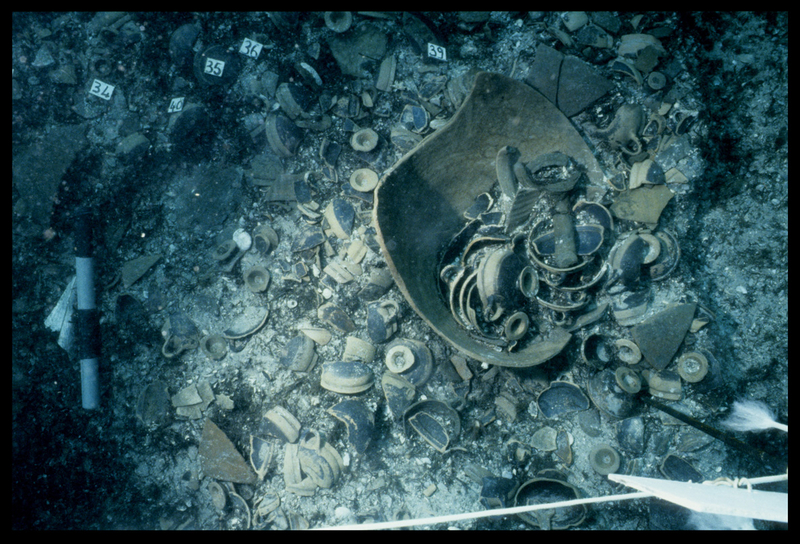- Home
- Underwater wrecks
- Lequin 1 A (Porquerolles, Var)
Map of the approximate location of the Lequin 1A wreck in the Var.
This wreck represents a milestone in the study of archaic trade in the West Mediterranean and contributes greatly to our understanding of the commercial relations that the young city of Marseilles enjoyed with the rest of the Greek world in the sixth century BC.
Description
Lequin 1A is one of a number of wrecks on the Pointe du Lequin site. It was identified in August 1985 while being looted. Lying at a depth of 3–8 m, Lequin 1A is the oldest of the wrecks. It yielded 1,500 Attic and Ionian cups, the latter probably originating from the island of Samos in the Aegean Sea. They are richly decorated with depictions of sphinxes, snakes, dolphins and tridents, as well as scenes and events from everyday life. The cups might have been transported in amphorae or large jars known as pithoi, ten of the latter having also been found on the wreck. Lequin 1A also furnished about 700 black-figure vases from Athens. Another hundred or so amphorae contained foodstuffs, wine and perhaps oil. This scientifically fascinating site dates from around 515 BC.
The cups are still in place at the bottom of the vase. Underwater view of the bottom of the jar with stacked cups.
© Philippe Foliot/Fonds Drassm/CNRS Ministère de la Culture
Fragment of a black-figure vase. This piece of vase depicts a typical scene of a warrior on his chariot.
© Luc Long/DRASSM
Nosing around... It will be difficult to identify its owner.
© Stéphane Cavillon/DRASSM
Operation manager
Luc Long/Drassm (1986-1993)
Bibliography
- LONG Luc, VOLPE Giuliano, MIRO Jordi.- Les épaves archaïques de la Pointe Lequin (Porquerolles, Hyères, Var) : des données nouvelles sur le commerce de Marseille à la fin du VIe et dans la 1ère moitié du Ve av. J-C. In : Marseille grecque et la Gaule : actes du coll. int. d'histoire et d'archéologie et du Ve congr. arch. de Gaule méridionale. Lattes; Aix : Adam éd, 1992, p 200-234. (Etudes Massaliètes ; 3).



